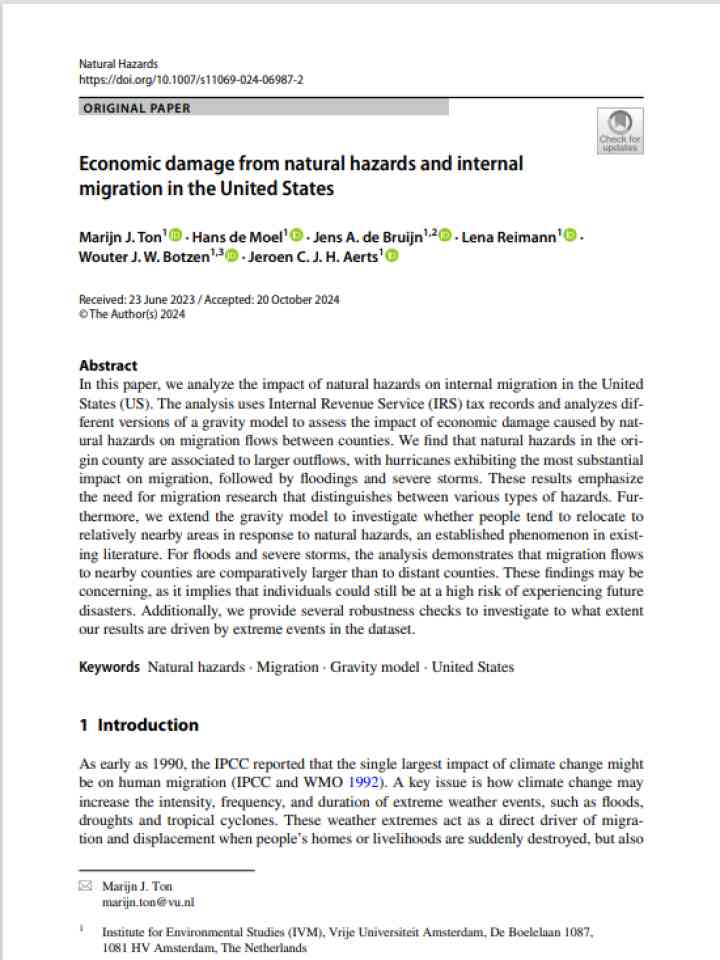Economic damage from natural hazards and internal migration in the United States
This paper analyzes the impact of natural hazards on internal migration in the United States, using IRS tax records and variations of a gravity model to assess how economic damage from natural hazards influences migration flows between counties. Findings indicate that natural hazards in origin counties correlate with increased outflows, with hurricanes exerting the strongest effect, followed by floods and severe storms. The results underscore the importance of migration research that differentiates among hazard types. The study also extends the gravity model to examine whether individuals tend to relocate to nearby areas in response to hazards, a pattern documented in prior research. For floods and severe storms, migration flows to neighboring counties are notably larger than to distant ones, raising concerns that individuals may remain at elevated risk of future disasters. Additional robustness checks examine the extent to which extreme events in the dataset influence these results.
Key outputs are as follows:
- Impact of hazard type on migration: natural hazards influence migration rates differently, with hurricanes showing the most significant effect on out-migration and reduced in-migration, while hazards like wildfires and tornadoes show lesser effects.
- Localized migration patterns: migration flows often remain within nearby counties, particularly after floods and severe storms, suggesting that populations may remain vulnerable to similar future hazards.
- Economic damage as a migration driver: economic damage caused by natural hazards is a primary driver of out-migration from affected areas.
- Policy implications: differentiating between types of hazards is critical for migration studies and suggests a need for tailored policies that address specific forms of disaster-induced migration and focus on reducing exposure in nearby relocation areas.
- Robustness checks: additional analyses assess the influence of extreme events in the dataset, ensuring the reliability of results across various conditions.
Explore further
